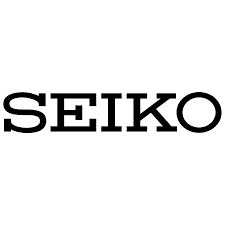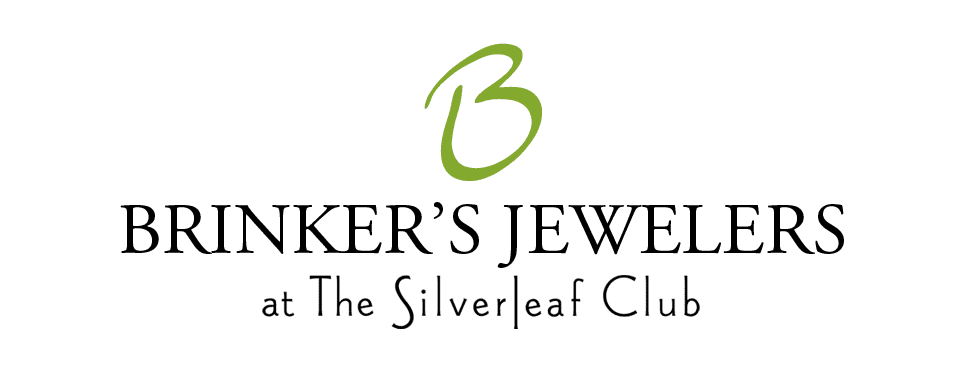Diamonds should be an expression of your unique personality, and there are few things more unique than colored diamonds. Though colored diamonds often carry a reputation for being lower quality than their white diamond counterparts, that reputation is simply inaccurate. Instead, colored diamonds provide an incomparable twist on a timeless and classic stone. They allow the wearer to explore their unique personality and aesthetic.
The color of diamonds is determined by the processes that made it, but with a nearly endless selection of unique colors and shades, there’s a colored diamond to match any sense of style. Over the past five years, colored diamonds have enjoyed a major boost in popularity — thanks in part to the celebrities who have chosen them for their engagement rings. Colored diamonds are sought after for their beauty, versatility, and rarity. For every 10,000 diamonds mined, only 1 will emerge with natural color.
Colored diamonds are a truly distinctive choice for an engagement ring or gift, but before you start shopping for your own colored diamond, there are a few things to know about these vibrant wonders:
1. What Is a Colored Diamond?
Colored diamonds are diamonds that fall outside the standard color range of a diamond. The colors of diamonds range from colorless to a light yellow as measured on a D-Z scale. Colored diamonds — sometimes called fancy diamonds — can be a multitude of colors including canary yellow, champagne, and orange. Natural diamonds can occur in nearly every color, including:
- Red. Red is the rarest color of diamond in the world. Because of this, it is in extremely high demand among jewelers. Red diamonds can range from lighter shades to a terrific, deep ruby red.
- Blue. Blue diamonds capture the beauty of the ocean, the sky, or a vibrant blue eye. They can range in color from a very light blue to a deep royal. After red, blue is the second rarest color of diamond.
- Yellow. Yellow diamonds mimic sunlight and have become popular with celebrities because they range in hue from light lemon to bright canary.
- Brown. Brown diamonds are a classic choice, and they can range from champagne tones to rich cognac brown. Their timeless aesthetic is a subtle statement piece and pairs well with neutral outfits.
- Green. Another rare color, green diamonds make truly unique pieces. The diamond colors range from a lovely shade of mint to a rich forest green.
- Pink. Often associated with romance and feminine energy, pink diamonds are very rare, ranging from very, very subtle shades to hot pink stunners.
- Orange. The bright hue of the rare orange diamond makes it a singular choice for an engagement ring or gift.
This list isn’t inclusive. There are also gray, black, and purple diamonds, or multi-colored diamonds. Colored diamonds range in price based on rarity.
The color of your diamond doesn’t just make a statement about your taste in jewelry. Colored diamonds also have meaningful connotations. Some of the most popular color choices and their meanings are:
Black Diamonds
Black diamonds get their rich color from natural inclusions of graphite, or lab enhancements like heat or radiation. Black diamonds are bold and indicate a confident personality and strong character. Sophisticated, stylish, and elegant, black diamonds are at their best when they’re paired with white diamonds to create a brilliant contrast that elevates the beauty of both stones. However, pairing a black diamond with other stones will still create a unique blend of classic and modern aesthetics.
Yellow Diamonds
Dazzling yellow diamonds have gained popularity among celebrities, pop culture, and, consequently, mainstream consumers. Often called canary diamonds, yellow diamonds capture the beautiful yellow shade of their namesake. Yellow diamonds contain nitrogen, which absorbs blue light and gives the stone its color. Yellow diamonds are eye-catching and showcase your light-hearted romantic side.
Pink Diamonds
Pink diamonds are usually found in Australia and range from pale to vivid hues. Pink diamonds represent romance and independence, and they’re an instant elevation for your style. Much like the canary diamond, the pink diamond has gained popularity among celebrities, with Jennifer Lopez and Mariah Carey showcasing them on the red carpet.
Blue Diamonds
The highly coveted blue diamond is created when boron is added to the stone. The cool tones of a blue diamond represent class and prosperity.
Cognac Diamonds
Cognac diamonds create a perfect centerpiece for earrings, necklaces, rings, and more. They are often paired with white or other colored diamonds to elevate and highlight the coloration of the brown stone. A bolder choice than the lighter champagne diamond, cognac diamonds are sure to be noticed.
2. Are Colored Diamonds Real Diamonds?
Despite any misconceptions you may have about colored diamonds, according to the Federal Trade Commission, both lab and natural diamonds are real diamonds. However, there’s a distinct difference in value between lab-created and naturally occurring diamonds. Despite their identical appearance and makeup, lab-treated and lab-created diamonds are considered less valuable than naturally occurring diamonds.
How Natural Diamonds Form
Whether white or colored, mined diamonds are carbon structures that have crystallized beneath the earth’s surface. This process requires a perfect balance of heat and pressure and takes place over millions of years. Natural events such as volcanic eruptions and shifts in the earth’s crust force the perfectly formed stones to the surface, where they are mined, cut, polished, and sold.
Colored diamonds form when foreign particles are introduced as the stone crystallizes. These particles impact the chemical formation of the diamond, which affects the stone’s appearance. Each type of particle produces a slightly different outcome, resulting in an endless array of gorgeous, exceptionally colored stones.
How Diamonds Are Created in a Lab
When it comes to creating diamonds in a lab, the process starts with a carbon seed. The seed is placed under conditions that mimic the natural crystallization process. Two common methods include “High Pressure High Temperature” and chemical vapor deposition.
In chemical vapor deposition, a slice of carbon seed — typically created using the High Pressure High Temperature method — is placed in a high temperature chamber. Gases that cause the formation of the diamond are introduced into the chamber, and then ionized using specialized lasers. Ionization causes the carbon seed to slowly crystallize. The end result is a diamond identical to one mined from the earth.
How Color Is Added to Diamonds in a Lab
In lab-created diamonds, the same particles that can be found below the earth’s surface are introduced during the formation process to add color. As with white diamonds, colored diamonds created in the lab share an identical mineral makeup with their natural equivalent.
On some occasions, gemologists use a process called irradiation to intensify naturally occurring colors. Irradiation mimics natural radiation and can reveal intense color changes in some stones. Intensely colored diamonds are rare in nature, but irradiation allows buyers to enjoy unparalleled beauty for an affordable price. Irradiated natural diamonds are still considered natural despite their lab treatment.
3. How Much Does a Colored Diamond Cost?
An important aspect to keep in mind when shopping for colored diamonds is that they’ll likely be more expensive than white diamonds. If you’re looking for a vibrantly colored diamond, you should be prepared to spend a bit more money. Muted hues like black diamonds, salt-and-pepper, gray, and champagne diamonds are exceptions to this rule of thumb.
Pricing is based on the rarity of the particular color and the market demand. Other elements that impact the price of your diamond include:
- Purity of color. A purer diamond will cost more. Any gray or brown tints within the stone will lower its value.
- Intensity of color. The more vibrant and intense the color of the diamond, the more value it has. Richer colors are rarer than those with light tints, so you’ll pay more for an intensely colored stone.
4. How Are Colored Diamonds Graded?
Whether you’re looking for loose colored diamonds or a custom colored diamond engagement ring, all colored diamonds are graded with the standard 4Cs. Determining the grade of a colored diamond includes examining its:
Cut
While many people mistakenly believe that a diamond’s cut refers to its shape, the cut of a diamond is not the final shape it takes. Rather, a cut grade describes the unique angles of the diamond and the way the proportions and facets interact to reflect light.
The cut of a diamond has an impact on its fire or shine, and a well-cut diamond will reflect light between facets and shine through the top of the stone.
Color
Color is a vital characteristic when it comes to selecting the perfect diamond. A D-grade is a white, colorless diamond. As color deepens, the grading moves closer to a Z grade. The closer a diamond gets to a D-grade, the higher its grade is considered to be, and the higher its price.
Some buyers prefer Grade D diamonds for their rare brilliance. Others prefer their stones with a bit of color. In the case of white diamonds, a D-grade is the most desirable. However, when shopping for colored diamonds, color grading is less of a concern.
Clarity
Clarity measures the amount and severity of the imperfections in a diamond. Called blemishes or inclusions, these imperfections are often nearly impossible to see with the naked eye. They occur in most diamonds and rarely affect the stone’s beauty. According to GIA standards, a diamond’s clarity is evaluated based on the qualities of its imperfections, including:
- Number
- Size
- Position
- Nature
- Relief
Each element contributes to the stone’s grade, which is also determined by its overall impact on the stone’s beauty. Diamonds with greater clarity are rarer and more expensive. The grades of clarity include:
- Flawless. Flawless diamonds are free from blemishes or inclusions.
- Internally Flawless. An internally flawless diamond possesses no inclusions.
- Very, Very Slightly Included. A VVS1 or VVS2 possesses inclusions, but they must be difficult for a grader to see.
- Very Slightly Included. A diamond graded as VS1 or VS2 has inclusions, but they are challenging to see with magnification. They can be characterized as minor flaws.
- Slightly Included. SI1 and SI2 diamonds have noticeable blemishes.
Included. Diamonds that receive an I1, I2, or I3 grade have obvious blemishes that may impact the transparency or brilliance of the stone.
Carat
Naturally, a diamond’s value is determined by its size. According to GIA standards, a carat measures the weight of a diamond. One carat is equal to two-tenths of one gram. Carats can be divided into 100 points to allow for the most accurate measurement of a diamond’s weight. As you can imagine, larger diamonds are more expensive than smaller stones because of their rarity.
Hue
In addition to the 4Cs, colored diamonds are graded on their hue and intensity. In the grading process for colored diamonds, there are roughly 30 base colors. These hues can be merged to create at least 200 color combinations. Graders assign a unique name to the color, which includes a base color and its secondary colors. A blue diamond that presents shades of green might be described as “greenish blue.”
Hue and intensity are denoted with terms like “light” or “intense,” be it a light orange or an intense blue. Common terms from light to dark include:
- Faint
- Very light
- Light
- Intense
- Deep
- Dark
- Vivid
When the grader assigns a name to the diamond, it will include the base color, secondary color, and intensity. For example, a diamond might be sold as a “very light greenish blue.” The more intense and rare the color, the more valuable the diamond will be.
5. Where Can I Find a Beautiful Colored Diamond?
If you’re looking for a uniquely colored stone for an engagement ring, gift, or new piece of timeless jewelry, look no further than Brinker’s Jeweler’s selection of colored diamonds. The professionals at Brinker’s Jewelers can help you buy the colored diamonds and colored diamond jewelry you’ve been dreaming of. Check out our guide to colored diamonds for information about how to reimagine classic jewelry and choose the perfect hue for you or your partner.
















